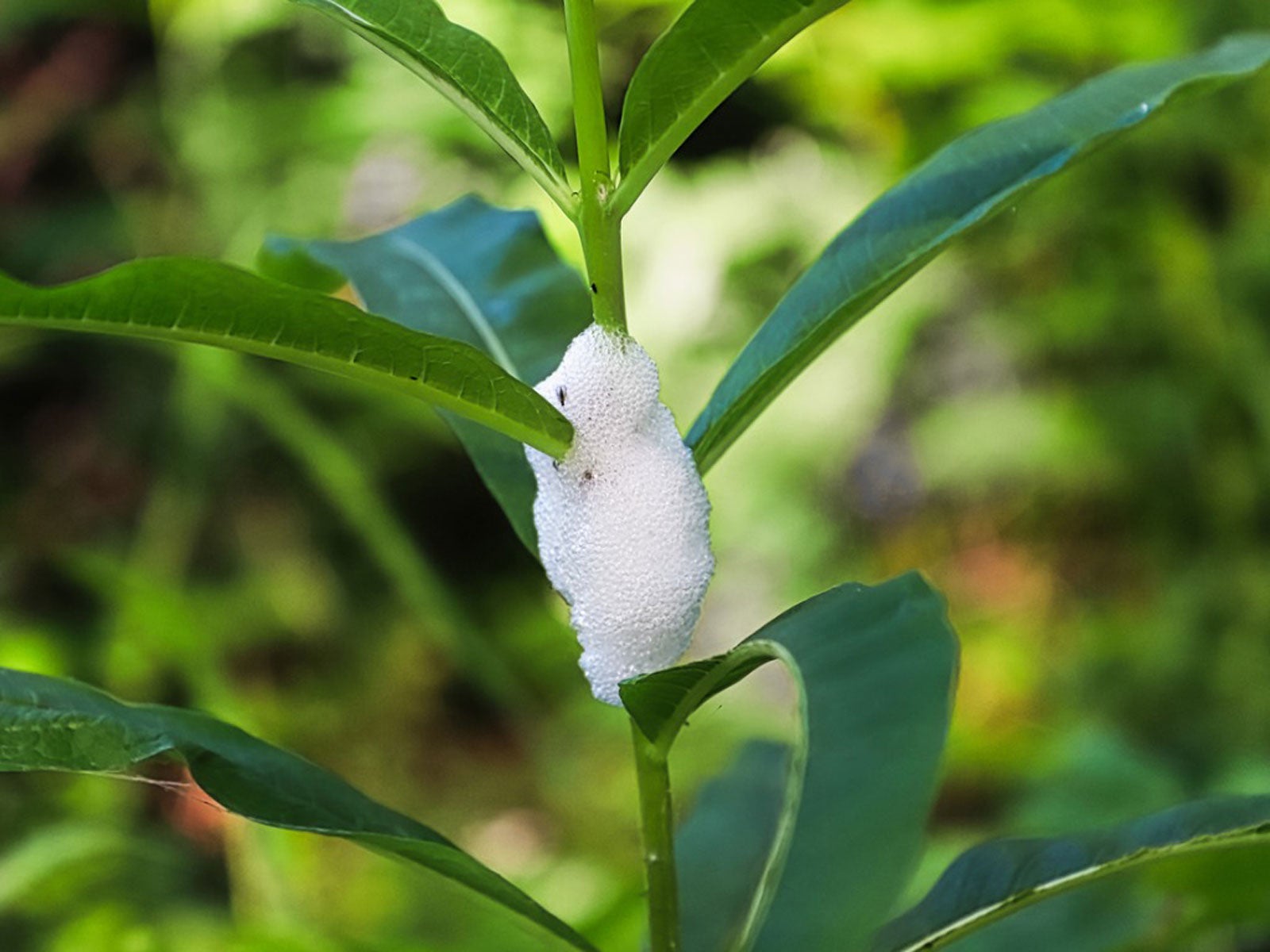Steps To Eliminate Spittlebugs - How To Control Spittlebug


If you are reading this, you probably asked yourself, "What bug leaves white foam on plants?" The answer is a spittlebug. Never heard of spittlebugs? You are not alone. There are around 23,000 species of spittlebugs (Family: Cercopidae), yet few are the gardeners that have ever really seen one. Most probably have seen the protective covering or nest they make, wondered what it was (or if someone had spit on their plant), and then blasted it off with a hard stream of water.
Learn About Spittlebugs
Spittlebugs are very good at hiding too, so they're not really easy to spot. The protective covering they make looks like someone placed soap suds (or spit) on your plant or bush. In fact, the tell-tale sign of spittlebugs is plant foam, and will normally appear in the plant where the leaf attaches to the stem or where two branches meet. The spittlebug nymphs make bubbles out of a liquid they secrete from their back ends (thus not really spittle). They get their name due to the foamy substance looking like spittle. Once the spittlebug has formed up a nice group of bubbles, they will use their hind legs to cover themselves with the foamy substance. The spittle protects them from predators, temperature extremes and helps keep them from dehydrating. The spittlebug lays eggs on old plant debris to overwinter. The eggs hatch in early spring, at which time the young attach themselves to the host plant and begin to feed. The young go through five stages before reaching adulthood. Spittlebugs are related to leafhoppers, and the adults are 1/8 to ¼ inch (3-6 mm.) long and they have wings. Their faces look a bit like the face of a frog, thus they are sometimes called froghoppers.
How to Control Spittlebug
Other than looking unsightly, spittlebugs do very little damage to a plant. They do suck some of the sap from the plant, but rarely enough to harm the plant - unless there are huge numbers of them. A quick blast of water from a hose-end sprayer will usually knock them off and eliminate spittlebugs from the plant they are on. Large numbers of spittlebugs can weaken or stunt the growth of the plant or bush they are on and, in such cases, a pesticide may be in order. Common pesticides will work to kill spittlebugs. When looking for an organic spittlebug killer, keep in mind that you are looking for something that will not only kill the spittlebug but will repel further infestation. A garlic or hot-based organic or homemade insecticide for spittlebugs works well in this case. You can do a double whammy with the following organic and homemade insecticide for spittlebugs:
Organic spittlebug killer recipe
- 1/2 cup (118 mL.) hot peppers, diced
- 6 cloves garlic, peeled
- 2 cups (473 mL.) water
- 2 teaspoons (10 mL.) liquid soap (without bleach)
Puree peppers, garlic, and water together. Let sit for 24 hours. Strain and mix in the liquid soap. Wipe the plant foam off the plant and spray all parts of the plant. Spittlebugs prefer pine trees and junipers but can be found on a variety of plants, including rose bushes. To help control spittlebug the following spring, do a good garden clean-up in the fall, making sure to get rid of as much old plant material as possible. This will limit the numbers that hatch considerably. Now that you know a little more about spittlebugs, you know what bug leaves white foam on plants and what you can do to stop it.
Sign up for the Gardening Know How newsletter today and receive a free copy of our e-book "How to Grow Delicious Tomatoes".

Stan V. Griep contributed to Gardening Know How for many years and has been a Colorado Native Rosarian for over four decades. He is an American Rose Society Certified Consulting Master Rosarian in the Rocky Mountain District, and a member of the Denver Rose Society, the Loveland Rose Society, and the American Rose Society. He is Gardening Know How's in-house expert on all things roses.